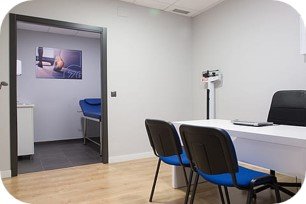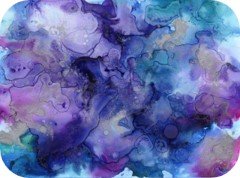
Overview
- Attractive and unique v.s the market.
- Homy and personal feel
- Inviting look and layout
- Simple/easy on the eye vs clutter

Contents of Presentation
Art Therapy Benefits
- Attractive and unique v.s the market.
- Homy and personal feel
- Inviting look and layout
- Simple/easy on the eye vs clutter
Overview
In an often stressful workplace, art therapy can help workers with stress relief, enables non-verbal self-expression and allows for easier communication within groups and small teams. Workers are given a healthy outlet for their issues, one that is not harmful to their health, while allowing for creativity to flow and eventually act as a positive influence to their work progress. By engaging in artistic activities, the workers’ creativity not only increases, but can give them that essential spark which allows for ideas related to work, such as a project or a presentation, to flourish.
Creativity is an essential asset in coming up with ideas that could benefit a business environment, one that helps with innovation and eventual communication of a company’s goals, intentions and ideas. By allowing workers to express themselves creatively and in a healthy manner within the office environment, the prospects for new ideas are more than guaranteed.
Stress in the Workplace
- Stress and anxiety disorders are two of the main issues that plague workers in modern workplaces besides money and health issues. Workplace stress contributes to costs for regional economies with missed work days, healthcare costs and lowered work morale.
- Workplace stress makes it hard to work on assigned tasks, let alone concentrate on them, thus hindering a worker’s progress and having a negative impact on their mental and physical health. This can negatively affect work progress on a long-term basis if left unchecked.
- Worst case scenario, workers may develop unhealthy coping mechanisms ( eg. consumption of alcohol, substances ) in order to drown out the tension that comes from being in a workplace.

Eastern Flowers
With regards to bringing art into the workplace, it would vary depending on place and situation. For instance, drawing something relevant during a meeting allows for better absorption of information, even slightly.
As a daily practice, spending 10 – 30 minutes a day, drawing as an opportunity for mindfulness and relaxation can be helpful as it helps to lower blood pressure.
Incorporating Art in a Workday
Because creativity is an innate drive, in most workplaces, one can observe creative expressiveness among workers. That can be observed in terms of someone’s attire or a design for a project that is due to take place. Art helps humanising what may be at times an alienable work environment, by necessity or design.

Art Therapy in the Workplace
While there is a plethora of activities that can be done as a form of art therapy, the ones that can be done within office grounds are some of the following
❖ Drawing and sketching
❖ Engaging in origami
❖ Using coloring pages with intricate shapes
❖ Creating small sculptures from paper clips or discarded pieces of paper
❖ Painting a picture
❖ Writing a postcard and designing it
❖ Making designs and templates for presentations, files and documents ( applying ones’ creativity directly to work )
By allowing workers to engage in activities that foster creativity ( be that creating art, concentrating on a hobby, or even reading a book ), they are given the means to relieve stress and process existing emotions within. This is what art therapy is here to achieve.
With art therapy, workers can express themselves and communicate their emotions in an artistic manner. They can also place their focus on activities that can allow them to clear their minds and helps encouraging creativity, which is more than needed when having to tackle projects that ask for innovation.
Art therapy is a therapeutic method that utilises art in order to relieve stress, communicate issues such as mental health issues and generally help with solving existing problems.
Art therapy has various applications and uses, some of which can be beneficial in a workplace environment. No artistic skill or talent is necessary, just creativity. It can help workers take a break from work for just a few moments to relax and regain focus or to allow for non-verbal self expression.
Aside from relieving stress, art therapy can be helpful in
❖ Increasing focus and energy in the workplace
❖ Improving a worker’s psychological health and helps with serious mental disorders
❖ Improving cognitive abilities and sensory-motor functions
❖ Nonverbal self expression and communication ( there are emotions, such as anger and grief that can be difficult to express with words )
❖ Providing healthier outlets and coping mechanisms for workers that need them
❖ Workers can create something special and relieving that they can also take home with them besides additional paperwork
Art therapy offers a lot of benefits within the office environment, not only for a singular worker, but also for multiple groups of workers.
By gathering colleagues around a table ( or multiple ) and doing a group activity is considered to help with socializing while doing an engaging activity.
By using art therapy in the workplace, workers get the opportunity to have fun, enjoy each other’s company and bond over a shared activity. Moreover, one can catch up with their colleagues, engage into casual conversations and eventually bond over multiple interests besides work-related ones.
As nowadays workers are likely to suffer from physical and mental conditions, art therapy helps in either providing a distraction from or improving various symptoms, such as reducing pain, anxiety and tension.
It can also be beneficial to those who have mental disorders, severe or light emotional abuse, cancer, post traumatic stress disorders (PTSD), workers who are bipolar, and a variety of other serious ailments.
As nowadays workers are likely to suffer from physical and mental conditions, art therapy helps in either providing a distraction from or improving various symptoms, such as reducing pain, anxiety and tension.
It can also be beneficial to those who have mental disorders, severe or light emotional abuse, cancer, post traumatic stress disorders (PTSD), workers who are bipolar, and a variety of other serious ailments.